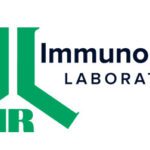Multiple Labeling (ML) Using Conjugated Secondary Antibodies | News

Selection of antibodies for simultaneous detection of more than one antigen depends on at least two important criteria:
- Availability of secondary antibodies that do not recognize (a) one another (are derived from the same host species), (b) other primary antibodies used in the assay system, (c) immunoglobulins from other species present in the assay system, or (d) endogenous immunoglobulins present in the tissues or cells under investigation.
-
Use of probes (enzyme-reaction products, fluorophores, or electron-dense particles) that are well resolved.
The affinity-purified antibodies marked ML (multiple labeling) have been specifically prepared to meet these criteria. One of many possible multiple-labeling protocols using these reagents is shown in the following example.
| Mouse Tissue Antigen A | Mouse Tissue Antigen B | Mouse Tissue Antigen C |
|---|---|---|
|
Step 1: 5% N. Donkey Serum to block Step 2: Goat Anti-Antigen A Step 3: Probe 1-conjugated |
Step 4: 5% N. Donkey Serum to block (if needed) Step 5: Rabbit Anti-Antigen B Step 6: Probe 2-conjugated |
Step 7: 5% N. Donkey Serum to block (if needed) Step 8: Rat Anti-Antigen C Step 9: Probe 3-conjugated |
Note: Wash thoroughly after each step, including after blocking at step 1. With heavy or persistent background further blocking may be required at Steps 4 and 7. Do not dilute any antibody with normal serum or mix antibodies together to save time.
In this example, the secondary antibodies used in Steps 3, 6, and 9 do not recognize each other since they are all made in donkey. They have been solid-phase adsorbed so that they do not recognize the other primary antibodies used in Steps 2, 5, and 8. Also, they do not react with endogenous mouse Ig, which may be present in the mouse tissue. For a review of multi-color immunofluorescence labeling with confocal microscopy see Brelje, Wessendorf, and Sorenson, “Multi-color laser scanning confocal immunofluorescence microscopy: Practical application and limitations.” In Cell Biological Applications of Confocal Microscopy (Methods in Cell Biology. vol. 38). Ed. B. Matsumoto. Orlando, FL: Academic Press, Inc. 1993. , pp. 98-181.